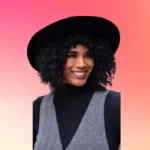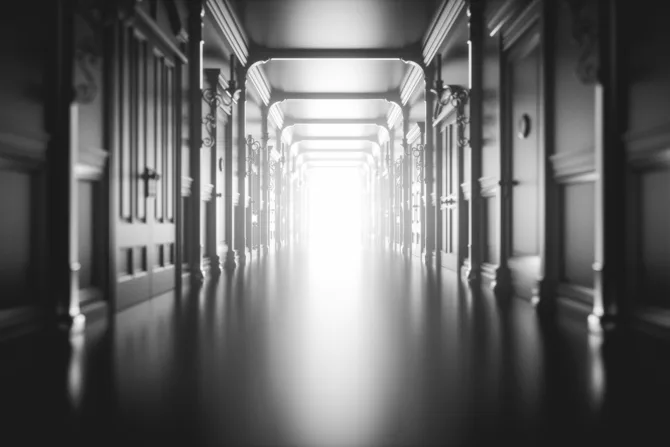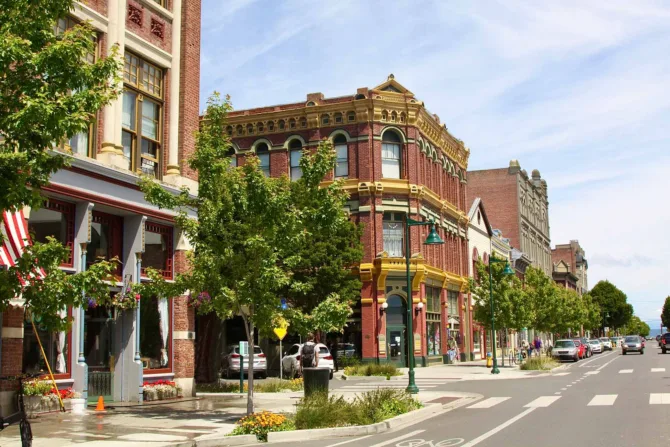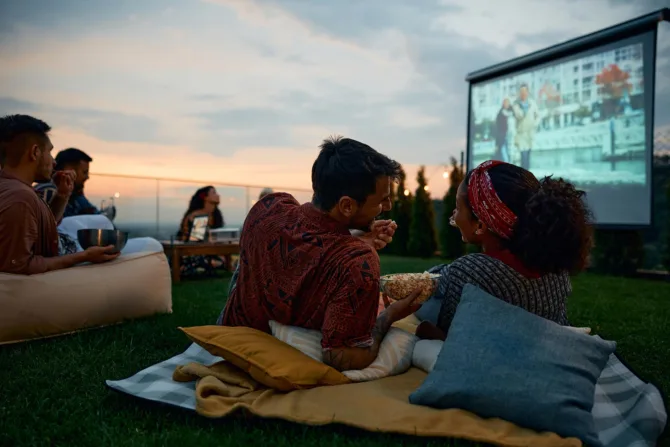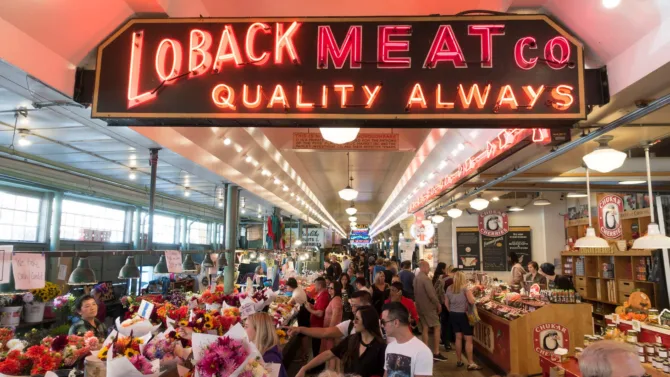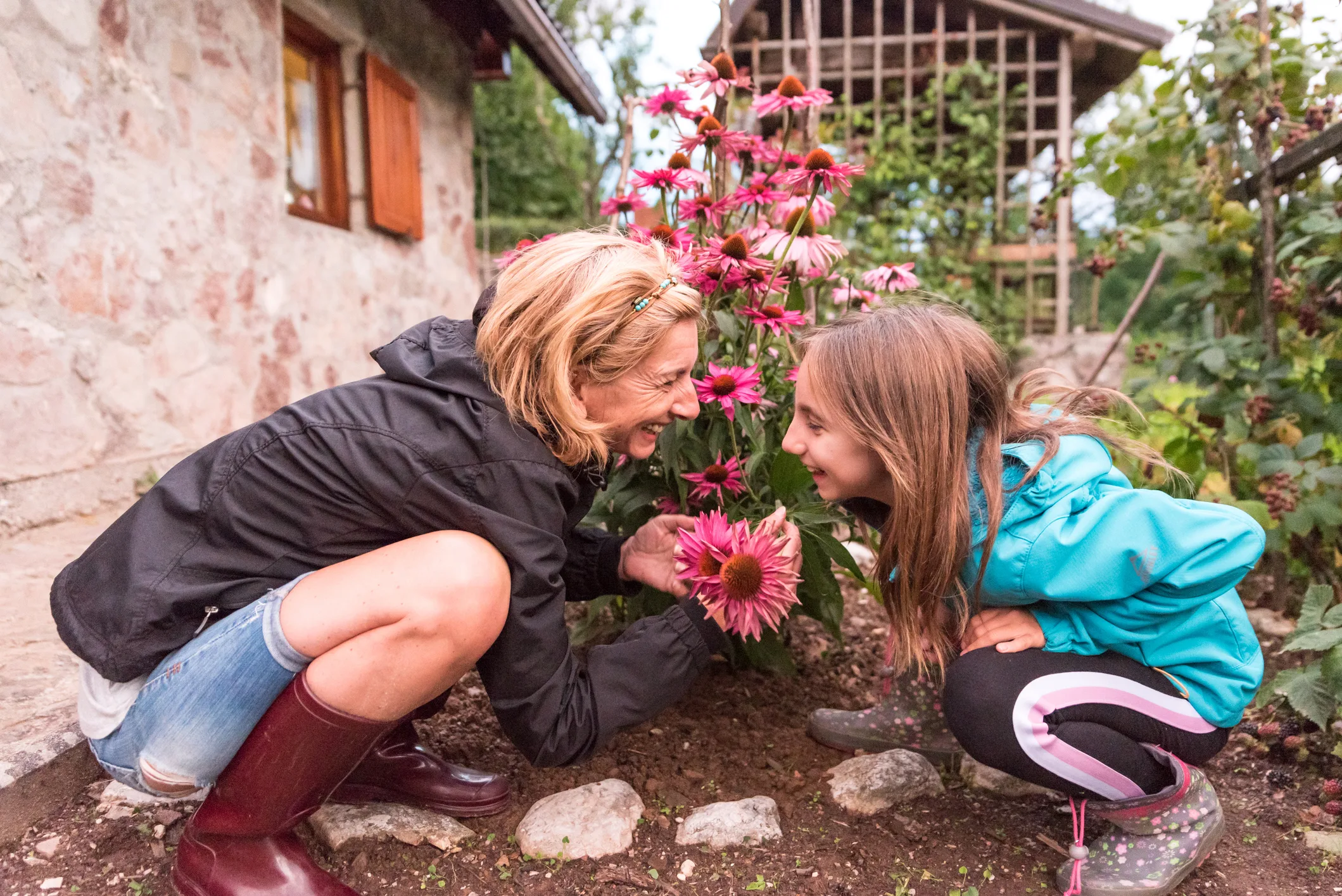
From May to September, nature unveils its most captivating spectacle: the peak seasons for petals. A perfect time to immerse yourself in the Seattle area’s local gardens and parks, these blooming flowers not only delight with fragrances but also can enhance creativity, productivity, and happiness. Whether your favorite flower is as common as the rose or more atypical like the trillium, here’s a list of where and when to see some of the area’s best blooms.
🙌 Blooming now
These flowers are blooming now in the Seattle area.
🏵️ Hydrangeas
Typically bloom from May to September
📸: Azndc
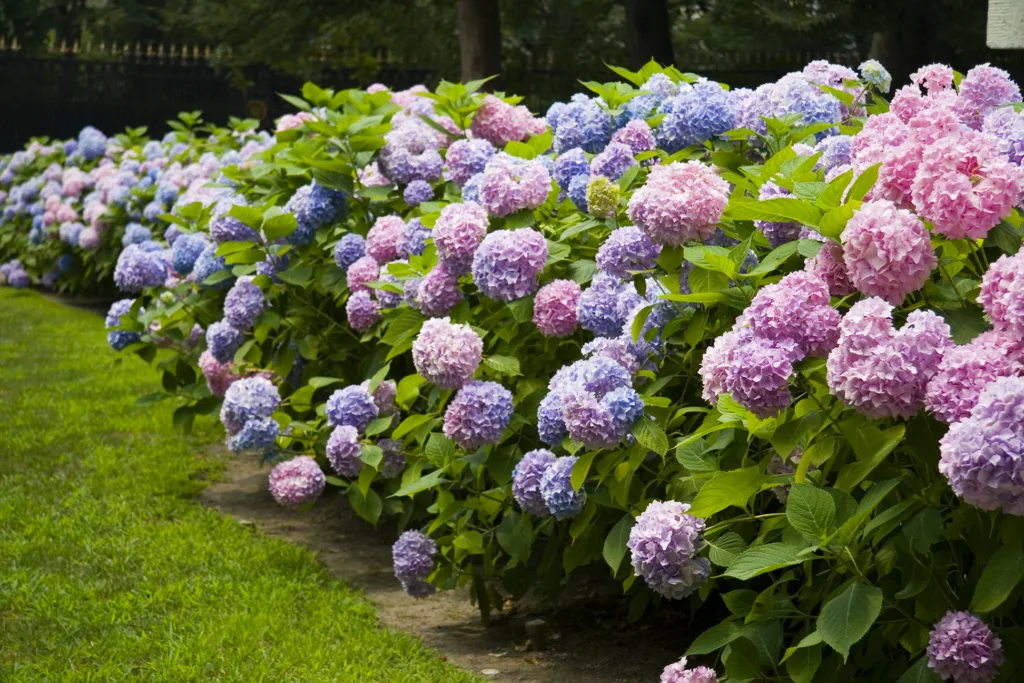
What’s cool about hydrangeas is that their flower color can change based on the soil pH. There are over 75 species native to various regions of Asia and the Americas. Though they come in many different colors, they don’t have petals but instead sepals—essentially leaves! The sepals bloom late spring to late summer, with peak flowering early to mid-summer.
🌸 Bellevue Botanical Garden: Hydrangeas can be found in the garden’s Perennial Border, Waterwise Garden, and Yao Garden, as well as planted near their buddies in the Rhododendron Glen. Numerous species are here, including the H. paniculata “Jane,” which starts out green and then ages into a rich rosy-pink in fall, and the H. paniculata “Grandiflora,” which turns from white to pinkish-bronze.
📍12001 Main St, Bellevue
⏰ Open daily: 7 am – 7 pm
📞 (425) 452-2750
🌺 Kubota Garden: At Kubota, at least 30 hydrangea varieties, including the blue lacecap and fire and ice, can be seen. The lush foliage adds to the serene sense found in the contemplative corners of the park, perfect for sitting and soaking in the sun amongst the many hydrangea hues.
📍10915 51st Ave S, Seattle
⏰ Open daily from sunrise to sundown
📞 206-725-5060
🌻 Washington Park Arboretum: Step into hydrangea heaven at the Washington Park Arboretum, where mature classic and rare species uncommon in American gardens can be viewed in the park’s Rhododendron Glen. See the blue eyes of the “Madame Emile Mouillere” blossom and the long, conical, white flowers of the “Snow Queen Hydrangea 2,” which slowly turn pinkish-purple. If hydrangeas make you happy, August is the best month here.
📍2300 Arboretum Dr E, Seattle
⏰ Open daily from 8 am – 8 pm
📞 (206) 543-8800
🏵️ Dahlias
Typically bloom from July to October
📸: OG Photo
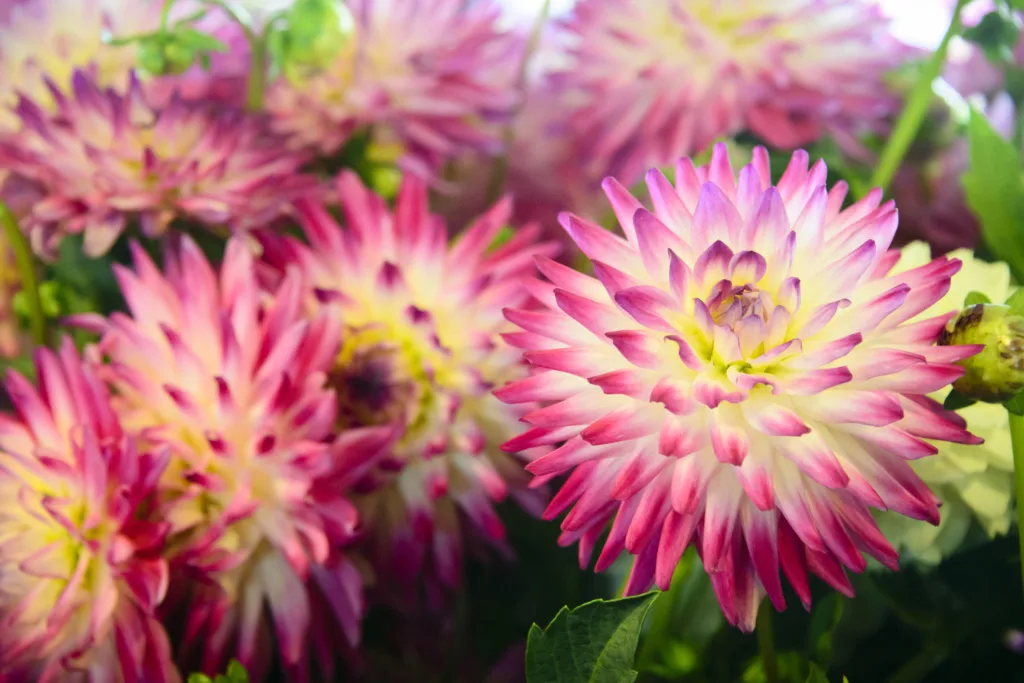
Due to their wildly beautiful colors, dahlias were brought from their native habitats in Central America and Mexico. There are 42 accepted species and thousands of cultivars in various colors, shapes, and sizes. Historically, the Aztec people even ate the tubers of these plants. The best time to view these heat-loving plants is late summer to fall.
🌸 Volunteer Park: Thanks to the Puget Sound Dahlia Association, this classic Capitol Hill city park has a stunning dahlia garden. They’ve been planting there since 1984 and plant more each May, with full bloom from late July through mid-October.
📍1247 15th Ave E, Seattle
⏰ Open daily 6 am – 10 pm
📞 (206) 684-4075
🌺 Bellevue Botanical Garden: The Puget Sound Dahlia Association also maintains a garden here. They plant the dahlias on the same schedule as in Volunteer Park, and they often hold sales of the tubers on-site.
📍12001 Main St, Bellevue
⏰ Open daily: 7 am – 7 pm
📞 (425) 452-2750
🏵️ Roses
Typically bloom from April to October
📸: Donna Neidig
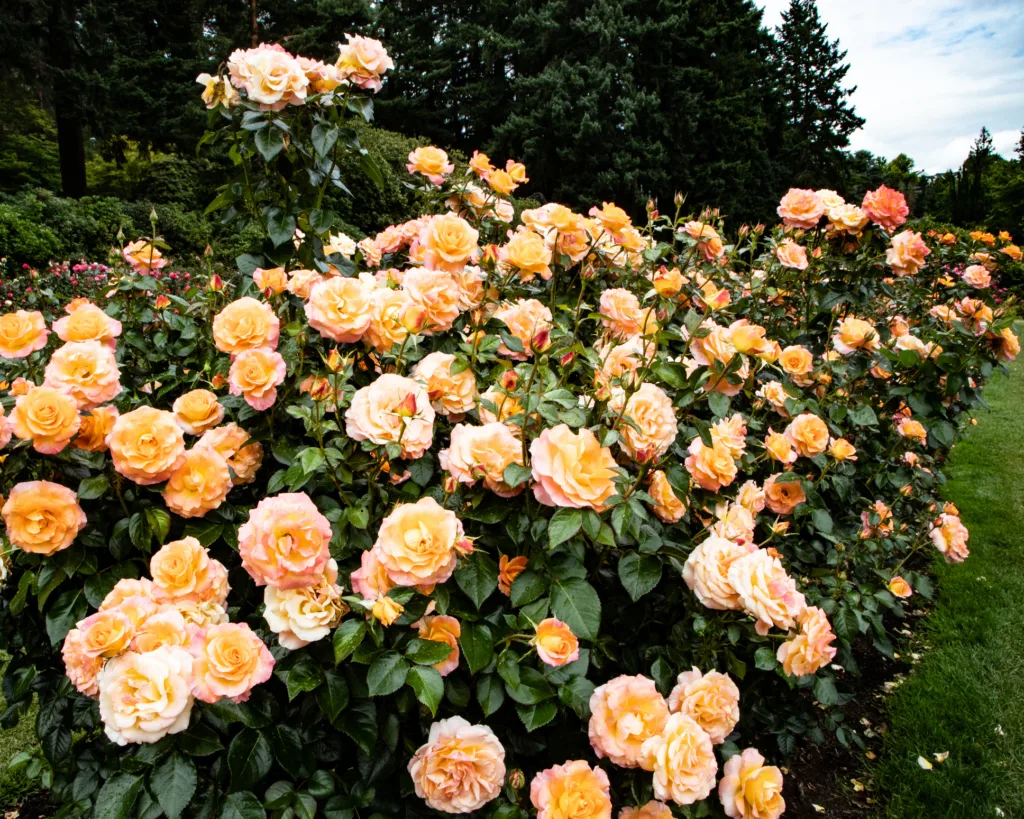
Perhaps one of the most well-known flowers, roses have been cultivated for thousands of years. There are over 300 species, and roses are native to Europe, Asia, and North America. Seen as a symbol of love, they have also been used in medicine, food, and cosmetics. The best time to catch blooms is late spring to early summer.
🌸 South Seattle College Arboretum: This arb was developed in the late 1970s as an outdoor classroom and public park. Known for its conifer collection, it also houses a sensory garden and the Helen Sutton Rose Garden, where numerous roses are planted in stone beds.
📍6000 16th Ave SW, Seattle
⏰ Open daily from dawn to dusk
🌺 Woodland Park Rose Garden: Open to the public and free of charge, the Woodland Park Rose Garden contains 2.5 acres with almost 3,000 roses of 200 different varieties for visitors to enjoy. Created in 1922, the Woodland Park Rose Garden’s collection includes hybrid tea roses, floribundas, and antique roses. A full list of roses can be found on their website. Plus, they feed spent flowers to the nearby zoo animals like the gorillas who love to gobble them!
📍 750 N 50th St, Seattle
⏰ Open daily from 7 am – 10 pm
📞 (206) 684-4075
🏵️ Fuchsias
Typically bloom from early May to late October or November
📸: Phanna Sitti
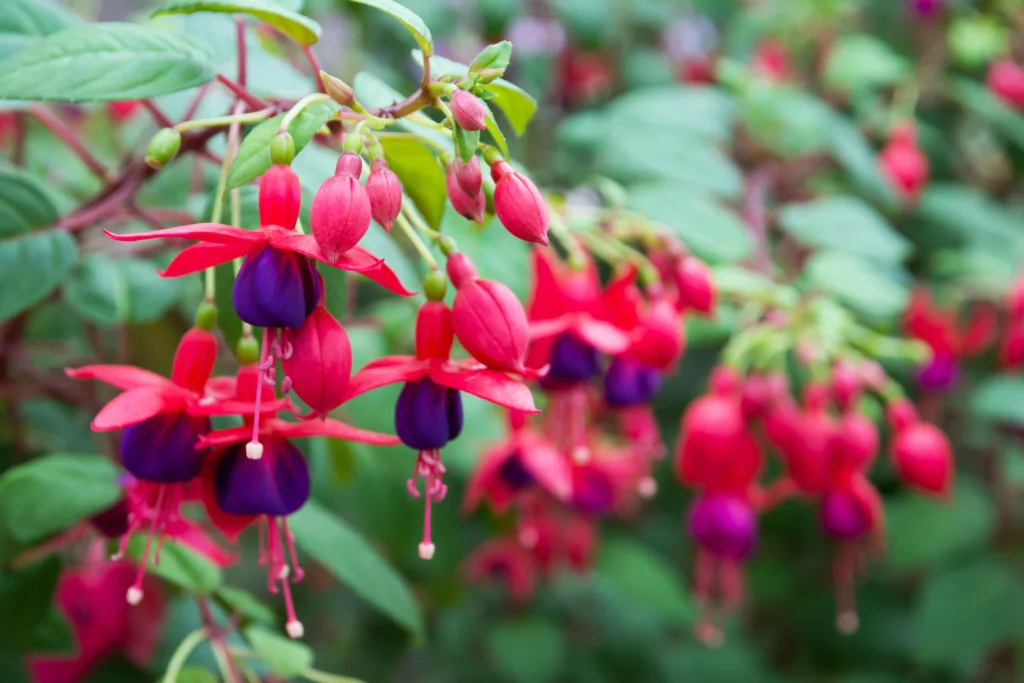
Native to Central and South America, New Zealand, and Tahiti, fuchsias were introduced to the United States in the mid-1800s. They became popular locally since they thrive in moist climates. They have a long blooming period that lasts from late spring to fall and are known for their pendulous flowers, which come in pink, purple, red, and white.
🌸 Bellevue Botanical Garden: The Eastside Fuchsia Society has maintained the fuchsia garden on-site since 1992. Nearly 100 different kinds of fuchsias are available for hummingbirds and human visitors. Attend the Flower Hour events held all summer to spot favorites or buy a hanging basket full of bright buds.
📍12001 Main St, Bellevue
⏰ Open daily: 7 am – 7 pm
📞 (425) 452-2750
🌺 Highline SeaTac Botanical Garden: This 11-acre free-to-the-public garden was moved to its current location to prevent the destruction of two gardens while the airport built an airport runway. Both the Puget Sound Fuchsia Society and the Western Fuchsia Species Society maintain gardens on-site to educate and share the shapely fuchsia species in a variety of colors all summer long.
📍13735 24th Ave S, SeaTac
⏰ Open daily from 6:30 am – 8 pm
📞 (206) 391-4003
🌻 Soos Creek Botanical Garden: David and Miriam Turner started this garden on their property in Auburn, but eventually, it became a public garden with themed areas and walking trails. Fuchsias are integrated throughout the garden, and different varieties are on view, like the “Madame V,” which can be spotted in the Elizabeth Fenzl Garden Room, an outdoor enclosed room with white pine and dogwood walls.
📍29308 132nd Ave SE, Auburn
⏰ Open Wednesday thru Saturday: 10 am – 4 pm
📞 (253) 639-0949
⏭ Blooming next year
These flowers have already bloomed this year in the Seattle area.
🏵️ Hellebores (Lenten Rose/Christmas Rose)
Typically bloom from February to April
📸: July 7th
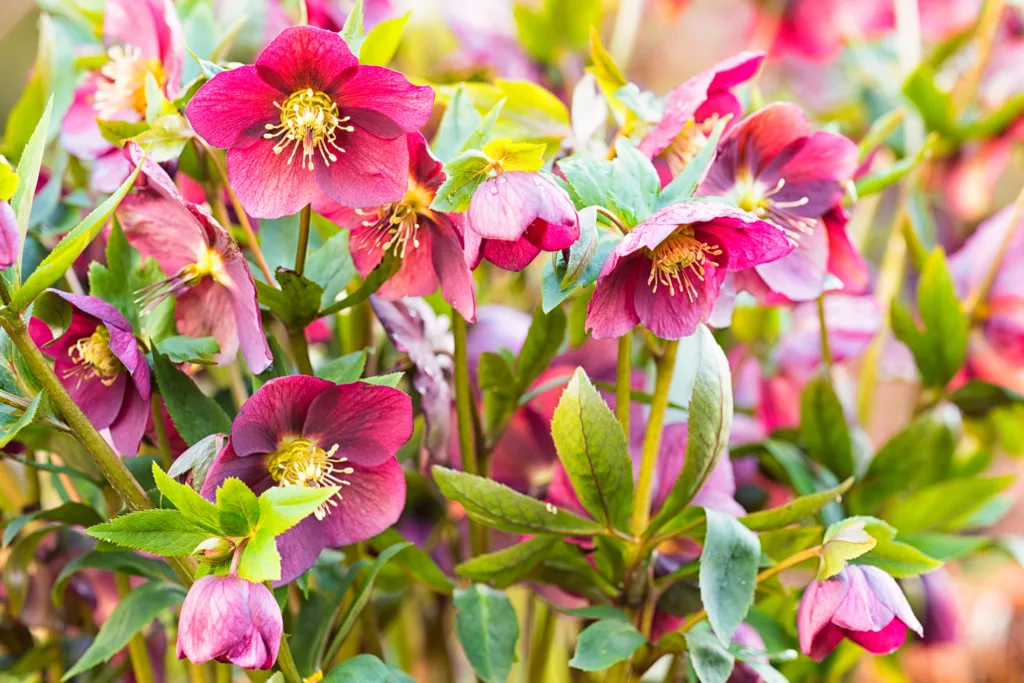
Sepal sisters with the hydrangea and named for when they bloom, Lenten and Christmas Roses are a type of hellebores. There are 20 species of this evergreen perennial plant. Native to Europe and Asia, despite their loveliness, they are toxic to people and pets. They bloom from winter to spring, with flowers lasting up to three months.
🌸 Bellevue Botanical Garden: The garden’s Perennial Borders are hedges where hellebores shine, including the dark purple of the “Mardi Gras Black Shades” and the burgundy of the “Ruby Wine.” They can also be spotted in the garden’s Waterwise Garden and the Shorts Ground Cover Garden.
📍12001 Main St, Bellevue
⏰ Open daily: 7 am – 7 pm
📞 (425) 452-2750
🌺 Soos Creek Botanical Garden: Catch the hellebores blooming at the start of the garden season in March. Find varieties of Christmas and Lenten Rose plus hybrids along the edges of the garden’s Fenzl Garden Room and in its Demonstration Garden.
📍29308 132nd Ave SE, Auburn
⏰ Open Wednesday thru Saturday: 10 am – 4 pm
📞 (253) 639-0949
🌻 Meerkerk Gardens: This woodland garden is worth visiting Whidbey Island to enjoy its 53 acres! Find hellebores blooming among the various rhododendrons. Since it’s a day trip, bring your leashed dog along, as this garden allows them.
📍3531 Meerkerk Ln, Greenbank
⏰ Open daily from 9 am – 5 pm
🏵️ Camellias
Typically bloom from late January into early April
📸: Camellia japonica blooming in the Seattle Japanese Garden
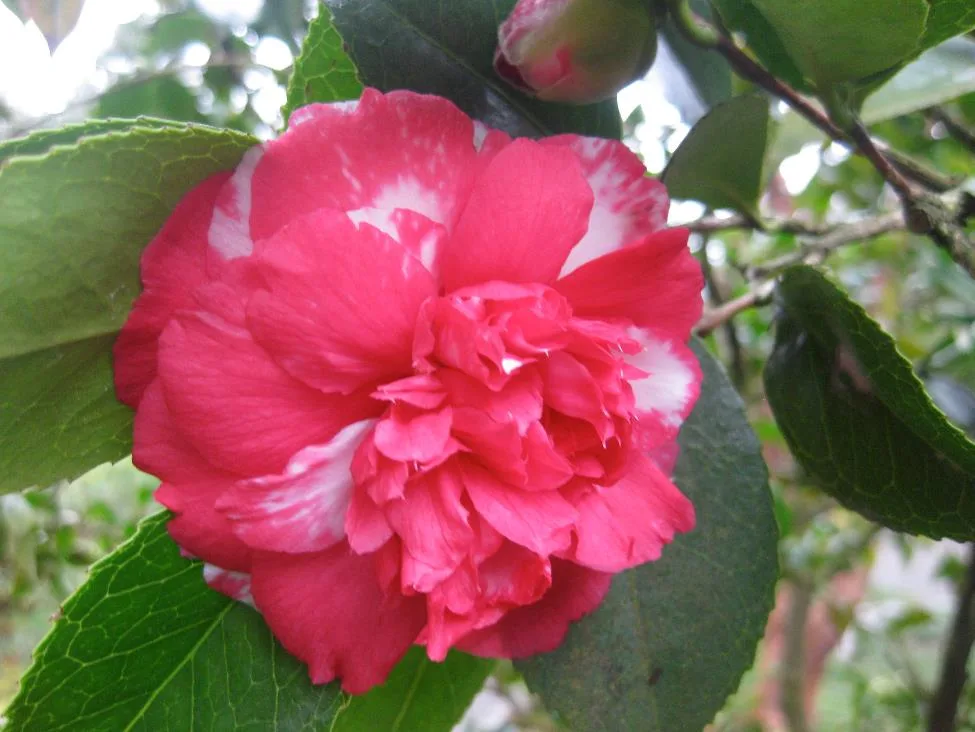
These flowering plants originate from eastern and southern Asia. The variety Camellia sinensis is pretty and used to produce tea. Brought to the United States in the late 1700s, they are popular here in the Pacific Northwest because they thrive in temperate climates. Though shrubs, these plants can grow up to 20 feet tall. Bloom times vary depending on the variety, but the popular Camellia japonica and Camellia reticulata are spring favorites.
🌸 Bellevue Botanical Garden: This free-to-access location spans 53 acres and includes woodlands, meadows, wetlands, and themed gardens. It has many Camellia varieties, including Camellia japonica and Camellia sasanqua. Check out the Yao Garden, named after Bellevue’s sister city in Japan. Spot the Camellias amongst Japanese maples, stone lanterns, and serene evergreens.
📍12001 Main St, Bellevue
⏰ Open daily: 7 am – 7 pm
📞 (425) 452-2750
🌺 Rhododendron Species Botanical Garden: Voted “Best in the PNW” in many categories, this garden, located on the Weyerhaeuser Campus in Federal Way, hosts numerous varieties of camellias with blooms ranging from white to deep red.
📍2525 South 336th St, Federal Way
⏰ Open Tuesday thru Sunday: 10 am – 4 pm
📞 (253) 838-4646
🌻 Seattle Japanese Garden: Visit the serene ponds and Japanese architecture at this garden within the Washington Park Arboretum. There are 32 different varieties of camellias on display, including the variations of the Camellia japonica, which include the white blooms of “Purity,” white/yellow of “Amabilis(Love),” and the deep pink of the “Cheerful.”
📍1075 E Lk Washington Blvd, Seattle
⏰ Open Tuesday thru Sunday: 10 am – 7 pm
📞 (206) 684-4725
🌷 Kubota Garden: This free-to-enter 20-acre public park garden was started in 1927 by Fujitaro Kubota, a Japanese immigrant who designed numerous gardens in the area. Some of the camellias found within date back to those early plantings. The camellias are planted throughout but can also be found in Fujitaro Kubota Terrace and near streams and ponds.
📍10915 51st Ave S, Seattle
⏰ Open daily from sunrise to sundown
📞 206-725-5060
🏵️ Trilliums
Typically bloom from March to June
📸: Nicole Kandi
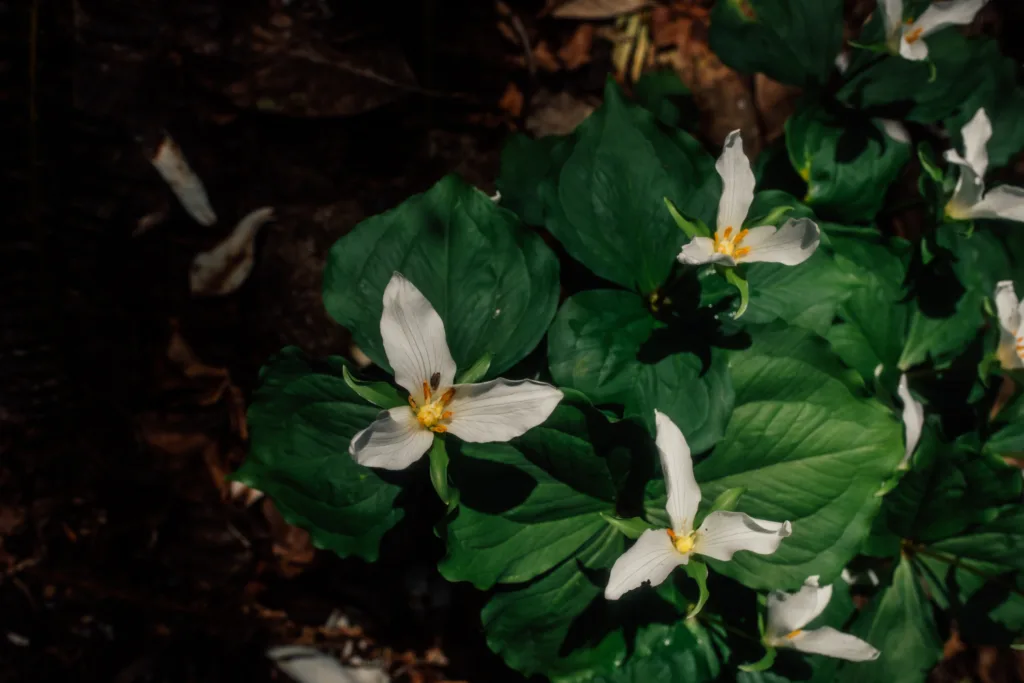
The name “trillium” comes from the plant’s three-part symmetry: three leaves, three petals, and three sepals. Native to North America, they can be found in forests and woodlands, creating a carpet amongst the trees. From seed, it takes five to fifteen years for the plant to bloom. The peak time for petals is March to May, and these flowers are feasts for deer.
🌸 Discovery Park: The wooded areas around the park contain western trillium with three white petals that turn pink or purple. Trillium grows along trails and in moist, well-shaded areas.
📍3801 Discovery Park Blvd, Seattle
⏰ Open daily from 4:30 am – 11 pm
📞 (206) 684-4075
🌺 Soaring Eagle Regional Park: With 790 acres of forests, wetlands, and wildlife habitat, this Sammamish park is a perfect place for forest flowers. Look for them while exploring the 12 miles of trails accessed via hike, bike, or horse ride.
📍 26015 E Main Dr, Sammamish
⏰ Open daily from 7 am – 9 pm
🌻 Lord Hill Regional Park: This 1,463-acre upland nature preserve in Snohomish has many places to see trillium in bloom. It’s a great destination for enjoying wildlife and viewing the Cascade and Olympic mountain ranges.
📍12921 150th St SE, Snohomish
🏵️ Rhododendrons
Typically bloom from February to July
📸: gmc3101
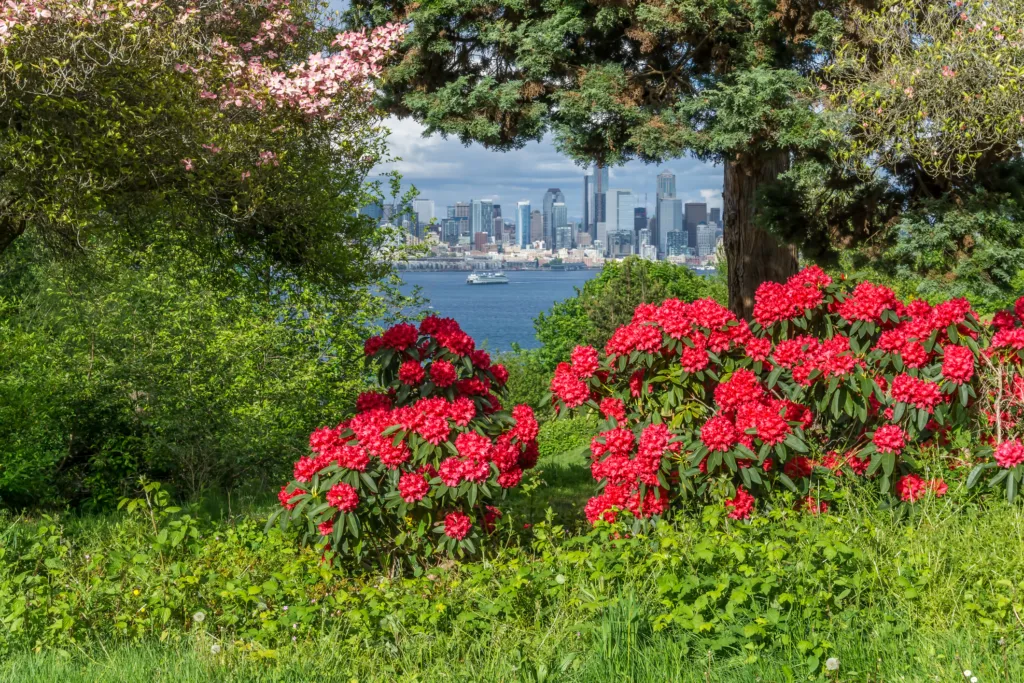
There are over a thousand species of rhododendrons. (In fact, azealias are actually rhodies.) Native to much of the globe, they are found in Asia, North America, Europe, and Australia. Indigenous peoples use certain species for medicinal purposes. They are also Washington state’s flower and the national flower of Nepal. Peak flowering happens late April to early June.
🌸 Kubota Garden: Find rhododendrons planted in clusters here to create striking visuals during bloom, like near the Moon Bridge and the pathways. Keep an eye out for the Pacific Rhododendron, our state flower.
📍10915 51st Ave S, Seattle
⏰ Open daily from sunrise to sundown
📞 206-725-5060
🌺 Rhododendron Species Botanical Garden: Home to the largest collection of rhododendron species in the world, this garden is dedicated to research and conservation. There is even a conservatory on site that houses a collection of tropical rhododendrons. Over 700 species are spread throughout places like the garden’s Big-Leaf Rhododendron Garden, Meadow, and Pond Garden.
📍2525 South 336th St, Federal Way
⏰ Open Tuesday thru Sunday: 10 am – 4 pm
📞 (253) 838-4646
🌻 Washington Park Arboretum: The park’s Rhododendron Glen has been part of the park since the 1930s and features both species and hybrid rhododendrons. But rhodies can also be found in the park’s Woodland Garden, Azalea Way, and Puget Sound Rhododendron Hybridizers Garden, which has over 100 hybrids produced by local breeders over the last 70 years.
📍2300 Arboretum Dr E, Seattle
⏰ Open daily from 8 am – 8 pm
📞 (206) 543-8800
🏵️ Magnolias
Typically bloom from March to July
📸: 4nadia
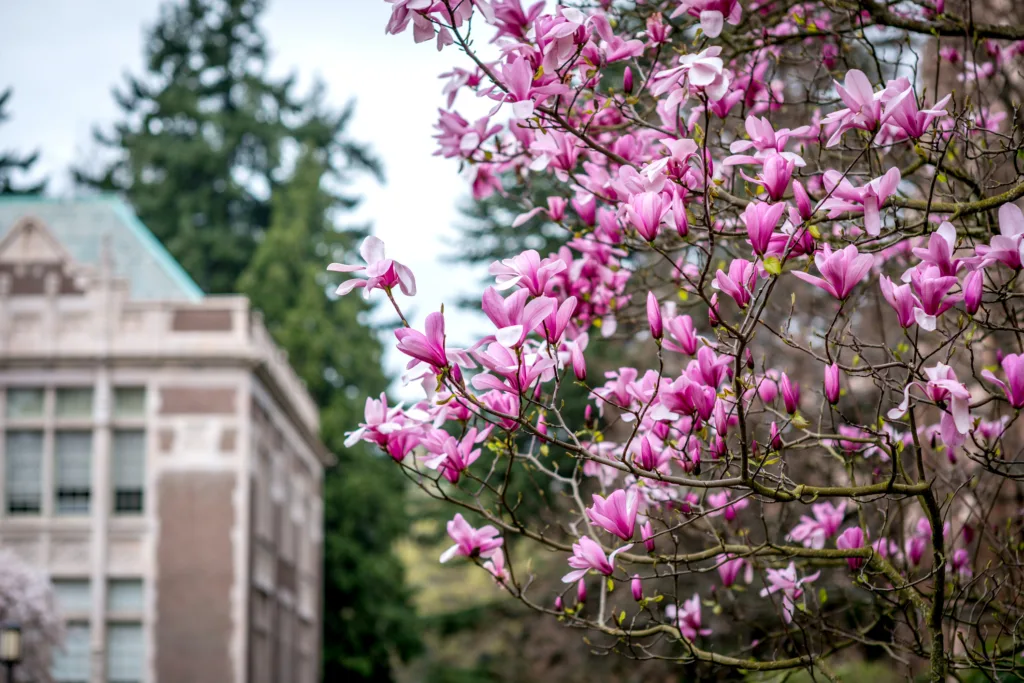
Among the oldest flowering plants on Earth, plant scientists date magnolias back 95 million years. (They evolved before bees, so beetles pollinate them!) With over 200 species native to East Asia, Southeast Asia, and North America, they typically bloom in early to mid-spring, though some magnolias bloom as late as July. These plants are known for their large, fragrant flowers, which can be white, pink, purple, green, or yellow.
🌸 Kubota Garden: Integrated throughout the garden near water features and the areas around the main entrance, there are multiple varieties of magnolias like the Star Magnolia, Saucer Magnolia, and the Southern Magnolia.
📍10915 51st Ave S, Seattle
⏰ Open daily from sunrise to sundown
📞 206-725-5060
🌺 Washington Park Arboretum: This park has one of the largest magnolia collections in the United States, with over 250 specimens representing 34 species, four subspecies, and 65 cultivated varieties. The park’s Witt Winter Garden has many varieties, including Campbell’s Magnolia. Head to the Pacific Connections Garden to see the Yulan Magnolia and hit the arboretum’s Main Trail to scope out the Kobus Magnolia.
📍2300 Arboretum Dr E, Seattle
⏰ Open daily from 8 am – 8 pm
📞 (206) 543-8800
🌻 Seattle Japanese Garden: The garden has six trees in the genus Magnolia. All but one are Magnolia x soulangeana, which bloom when they are quite young. The solitary Magnolia kobus, a native of Japan and over 50 feet tall, was planted in 1960.
📍1075 E Lk Washington Blvd, Seattle
⏰ Open Tuesday thru Sunday: 10 am – 7 pm
📞 (206) 684-4725
🏵 Coneflowers
Typically bloom from early June to August
📸: Carmen Agullo Molla
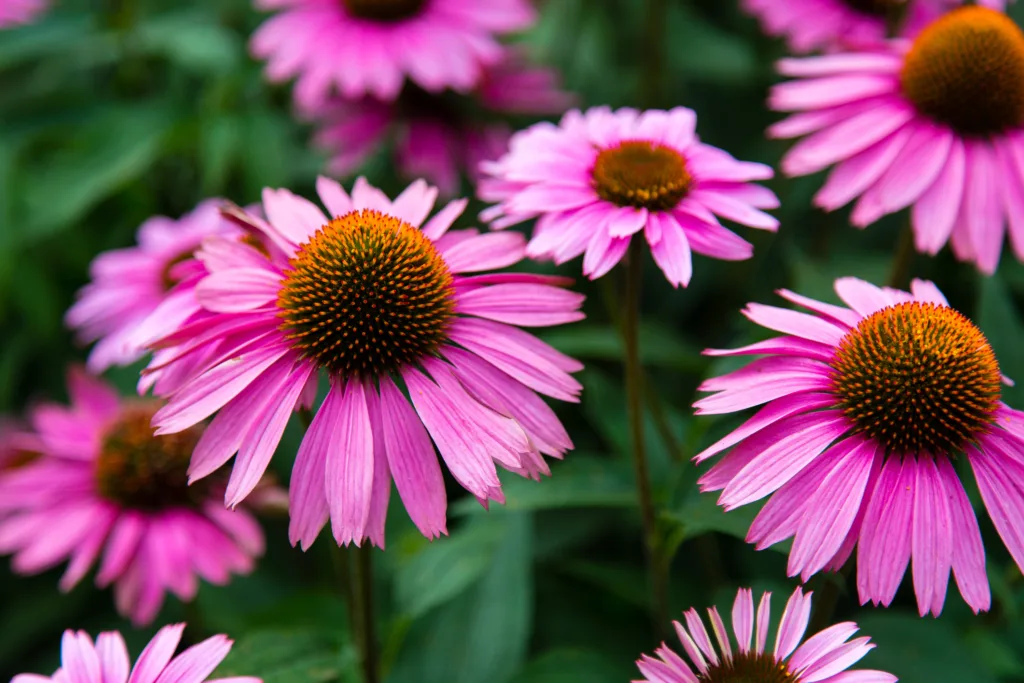
Coneflowers are part of the genus Echinacea, a plant often used to treat symptoms of the common cold. Native to North America, they boast daisy-like flowers in many colors, from purple and pink to white and yellow. Beyond being beautiful, they attract pollinators like bees and butterflies. Plus, they typically bloom from early June to August.
🌸 Bellevue Botanical Garden: Find coneflowers planted in numerous places, such as the garden’s Perennial Border, Meadow Garden, and Waterwise Garden. Numerous varieties are displayed, including the purple coneflower, known for its large, purple-pink petals, and the bright yellow coneflower. When these flowers go to seed in fall, catch birds nibbling them, particularly goldenfinches.
📍12001 Main St, Bellevue
⏰ Open daily: 7 am – 7 pm
📞 (425) 452-2750
🌺 Kruckeberg Botanic Garden: Located about 15 miles north of Seattle in Shoreline, this garden was started in 1958 by botany professor Dr. Arthur Kruckeberg and his wife to highlight plants that thrive in the Pacific Northwest. Eventually acquired by the city of Shoreline, visitors are not charged admission to see the garden’s narrow-leaf coneflowers and other varieties, including hybrid cultivars with orange and deep pink petals.
📍 20312 15th Ave NW, Shoreline
⏰ Open Friday thru Sunday: 10 am – 5 pm
📞 (206) 546-1281
🌻 Washington Park Arboretum: UW Botanic Gardens, the City of Seattle, and the Arboretum Foundation manage this free, open-to-the-public park. With over 230 acres of plants and walking trails, this arb offers workshops and tours. Numerous coneflowers are available to visit in the pollinator-friendly plant area near the Graham Visitors Center and walkway borders.
📍2300 Arboretum Dr E, Seattle
⏰ Open daily from 8 am – 8 pm
📞 (206) 543-8800

